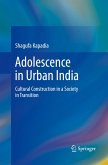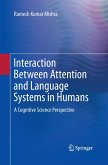This book provides a new direction in electronics researchwith the invention of a new material tuPOY, which changes our perception ofdeveloping electronics. Evolving on a relatively underplayed phenomenon ofstatic electricity in scientific exploration and application, tuPOY upholds thepotential to rival both silicon and metals as electronics of the future.Devices made of tuPOY present a new emblem to the technological world, where wecould envision our electronic paraphernalia from a completely differentperspective. A computer the size of a big wall, which could be neatly foldedand kept in our pockets when not in use and laundered on a regular basis, can beimagined possible with this invention. The concept, manufacturing process,physics and uses of tuPOY as the next generation material of electronics isdescribed in this book.
The book covers the production process of tuPOY and goes onto conceptual advancement from manipulating the sensing, radiating andprocessingproperties of tuPOY. Theoretical modelling of tuPOY is characterizedby steady-state equations exploiting interchanges based on the latticekinetics, which mathematizes an Interchange Phenomenon intuPOY. The numerical manifestations calibrate mathematically, tuPOY's responseto any external physical impetus such as charge, heat or energy flow.
The book validates the sensing properties and theoreticalmodel by designing a tuPOY sensor which can be used in a plethora ofapplications. A novel microstrip antenna is designed by amalgamation of tuPOY,raw silk and polynylon composites to experimentally verify the radiationproperties of the new material. The conduction properties are verified by drawingfibres of tuPOY and using them as wires and connectors in electronics. A PowerGenerating Unit (PGU) is designed with tuPOY as its primary element. This is afirst of its kind PGU that scavenges power from thermal energy presenting a newdimension in operational power dynamics.
Overall this bookshould be of interest to a wide range of readersranging from researchers, scientists, developers, manufacturers, engineers,graduate students and anyone who has satiety to think differently.
The book covers the production process of tuPOY and goes onto conceptual advancement from manipulating the sensing, radiating andprocessingproperties of tuPOY. Theoretical modelling of tuPOY is characterizedby steady-state equations exploiting interchanges based on the latticekinetics, which mathematizes an Interchange Phenomenon intuPOY. The numerical manifestations calibrate mathematically, tuPOY's responseto any external physical impetus such as charge, heat or energy flow.
The book validates the sensing properties and theoreticalmodel by designing a tuPOY sensor which can be used in a plethora ofapplications. A novel microstrip antenna is designed by amalgamation of tuPOY,raw silk and polynylon composites to experimentally verify the radiationproperties of the new material. The conduction properties are verified by drawingfibres of tuPOY and using them as wires and connectors in electronics. A PowerGenerating Unit (PGU) is designed with tuPOY as its primary element. This is afirst of its kind PGU that scavenges power from thermal energy presenting a newdimension in operational power dynamics.
Overall this bookshould be of interest to a wide range of readersranging from researchers, scientists, developers, manufacturers, engineers,graduate students and anyone who has satiety to think differently.
Es gelten unsere Allgemeinen Geschäftsbedingungen: www.buecher.de/agb
Impressum
www.buecher.de ist ein Shop der
buecher.de GmbH & Co. KG
Bürgermeister-Wegele-Str. 12,
86167 Augsburg
Amtsgericht Augsburg HRA 13309
Persönlich haftender Gesellschafter: buecher.de Verwaltungs GmbH
Amtsgericht Augsburg HRB 16890
Vertretungsberechtigte:
Günter Hilger, Geschäftsführer
Christian Sailer, Geschäftsführer
Sitz der Gesellschaft:Augsburg
Ust-IdNr. DE 204210010








